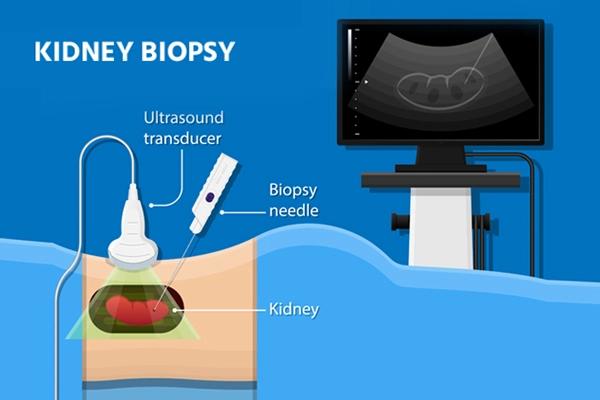KIDNEY BIOPSY
A kidney biopsy is a type of test in which kidney tissues are sent for microscopic examination. This helps identify the cause and severity of kidney disease and determine the appropriate treatment.
After some blood tests, the patient is admitted, and under ultrasound guidance, a biopsy needle is used to extract 2-3 tissue pieces under local anesthesia.
The kidneys are located on either side of the spine behind the ribs and move below the ribs during deep breathing.
The patient is positioned on their stomach (Prone Position) or laid flat in case of a kidney transplant. The kidney is located using ultrasound, the skin is cleaned, and local anesthesia is administered. The biopsy is performed only after the skin is numb.


Children may also be given mild sedatives.
Then, 2-3 thread-sized tissue samples are extracted using a biopsy needle, placed in a special preservative, and sent for examination.
After the biopsy, the patient must lie straight for 6 hours, during which blood pressure, pulse, and urine are monitored for any presence of blood.
If everything is normal, the patient is discharged the next day.
The patient is advised to avoid sports or physical activities for 7 days after the biopsy.
A provisional biopsy report is available within 2-4 days, based on which the treatment is initiated.
What are the risks of a kidney biopsy?
Risks are very rare. If any abnormality is noticed after the biopsy, contact a doctor immediately. Possible complications include:
01. Pain
Usually not severe and decreases over time.
02. Kidney Infection
03. Bleeding – The most significant complication.
- In 10% of cases, blood may appear in the urine, which mostly resolves on its own.
- 1-2% of cases may require a blood transfusion.
- 1 in 1,000 patients may need an angiogram to stop bleeding.
- In 1 in 100,000 cases, the affected kidney may need to be removed to save the patient’s life.

